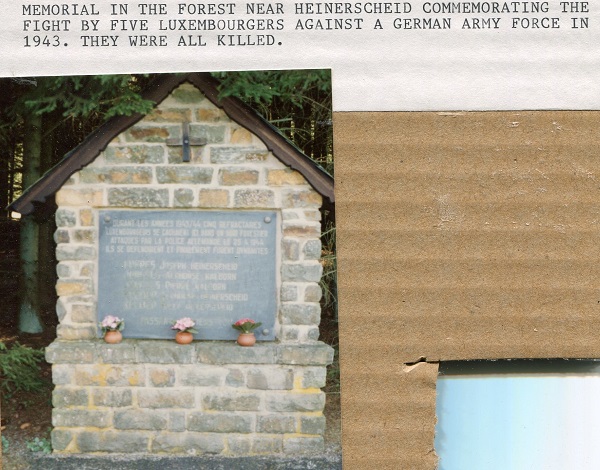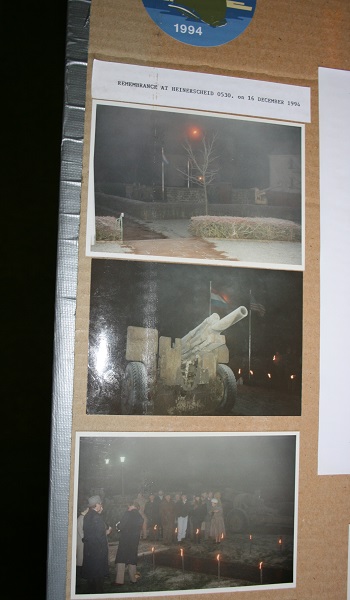 Credit: David Heal
Credit: David Heal
Chronicle.lu has teamed up with local author and tour guide David Heal of Luxembourg Battles for a new historical series.
Based on David Heal's extensive research spanning several decades (and documented in the form of place-name index cards), the series aims to present interesting local historical events and facts linked to places in (and around) Luxembourg.
Next up is a look at the history of Heinerscheid, the name of which may come from a Celtic word for the top of a hill, which is where it is situated, as is the (slightly) less northern village of Heiderscheid.
Driving through Heinerscheid, one will find on the right-hand side a war memorial with a difference. It consists of German and US anti-tank guns on either side of a central stone monument. When the village decided to build a proper memorial to both their own dead and the US Army GIs who had been killed there, they were first able to bring in the German gun which had been abandoned there. However, as David explained, for the US gun, the village asked the Battle of the Bulge Commemoration Society (CEBA) for help. One knowledgeable woman, Tilly Kimmes, reached out to a contact in the US Army. One day, a US Army truck pulled up outside the town hall and the driver walked in. “I’ve got Tilly Kimmes’ gun. Where do you want it?” He did indeed have the requested gun on the back of the truck. On the barrel was the address, “Tilly Kimmes, Heinerscheid”.
David shared how he had been present in Heinerscheid for the commemorations of the Battle of the Bulge in 1994 when all the church bells sounded down the front line at 05:00 - the time when the German bombardment had started. The weather was fine but cold - the white on the accompanying photograph is not snow but frost, he clarified.
Go down the road beside the church and keep going. After about a kilometre, one will find a chalet on the right. Outside it there is a small memorial. This is dedicated to five Luxembourgish youths who were called up into the Nazi army, but refused to go and, after hiding near Diekirch, fled up here and hid under a small barn in the forest. They were betrayed by a local man but refused to surrender to the troops sent to capture them and were eventually killed in an explosion. One can find the barn area by forcing one’s way down a small path opposite. All that is there is a hole with a memorial. There may be the remains of wreaths which are laid there every year.










